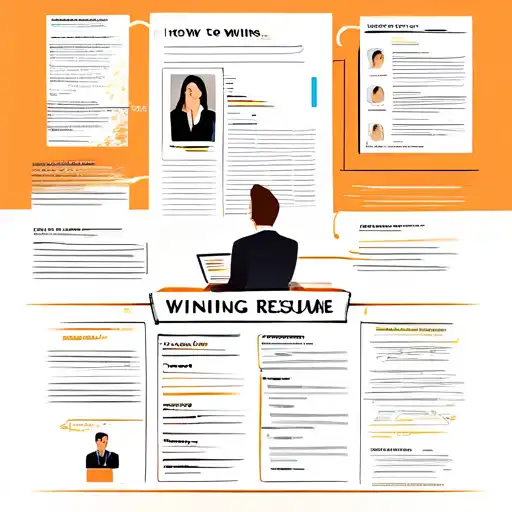Introduction
In today's competitive job market, having a winning resume is more important than ever. It's your first impression, your personal marketing document, and the key to unlocking interview opportunities. This guide will walk you through the steps to craft a resume that stands out from the crowd.
Understanding the Basics
Before diving into the details, it's crucial to understand what makes a resume effective. A winning resume is clear, concise, and tailored to the job you're applying for. It highlights your achievements, skills, and experiences in a way that's easy for recruiters to scan.
Step 1: Choose the Right Format
There are three main resume formats: chronological, functional, and combination. The chronological format is the most common and preferred by employers, as it lists your work history in reverse order. Choose the format that best showcases your strengths and experiences.
Step 2: Craft a Compelling Summary
Your resume should start with a professional summary or objective. This section is your elevator pitch, summarizing your qualifications and what you bring to the table. Keep it brief and impactful, focusing on your most relevant skills and achievements.
Step 3: Highlight Your Work Experience
List your work experience in reverse chronological order, starting with your most recent job. For each position, include your job title, company name, dates of employment, and key responsibilities and achievements. Use bullet points for readability and start each point with an action verb.
Step 4: Showcase Your Skills
Create a dedicated skills section to highlight your technical and soft skills. Be sure to include skills that are relevant to the job you're applying for. This section can also include certifications or languages you speak.
Step 5: Education and Additional Sections
Include your educational background, starting with the highest degree you've earned. If you have space, consider adding sections for volunteer work, publications, or professional affiliations to further demonstrate your qualifications.
Step 6: Optimize for ATS
Many companies use Applicant Tracking Systems (ATS) to screen resumes before they reach a human. To ensure your resume passes through, use relevant keywords from the job description, stick to a simple format, and avoid graphics or unusual fonts.
Step 7: Proofread and Get Feedback
Before submitting your resume, proofread it multiple times to catch any typos or grammatical errors. It's also helpful to get feedback from a mentor or professional in your field. They can provide valuable insights and suggestions for improvement.
Conclusion
Crafting a winning resume takes time and effort, but it's an investment in your career. By following these steps, you can create a resume that effectively showcases your qualifications and helps you stand out in the job market. Remember, your resume is a living document—update it regularly as you gain new skills and experiences.
For more career advice, check out our guide on how to ace your job interview.
